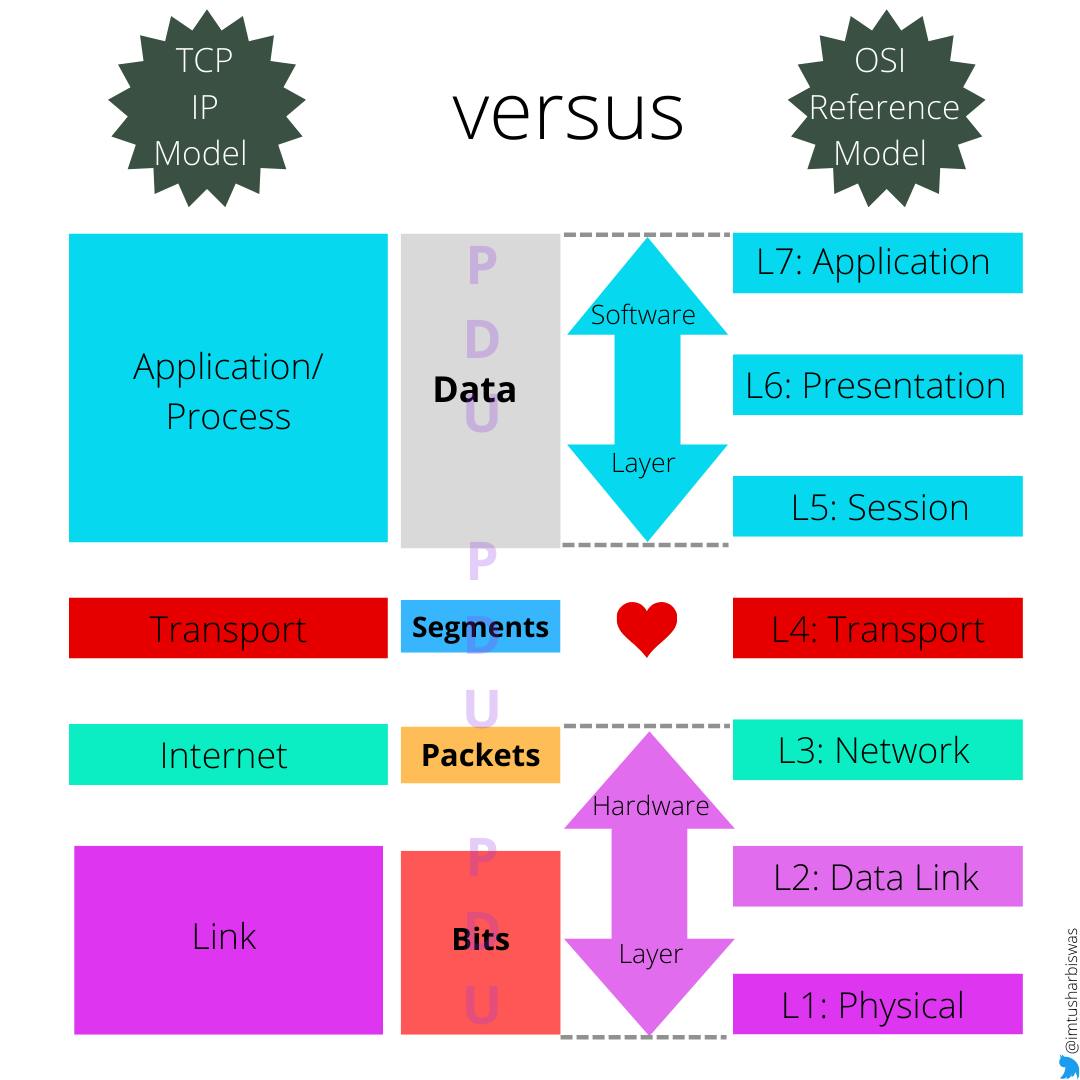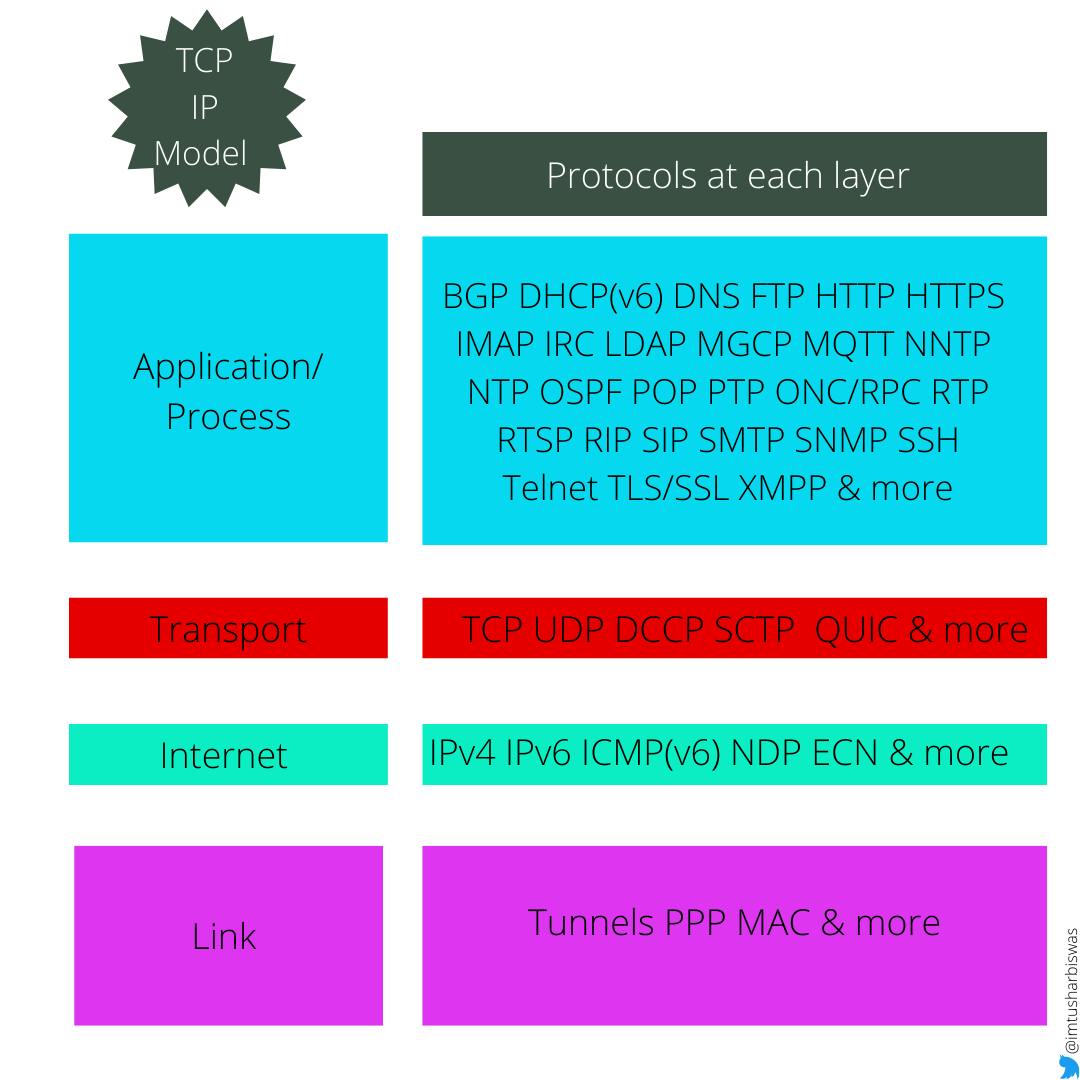8 important TCP/IP topics by Kenno
Figuring Out Internet Protocol suite while comparing it with the OSI model from a web development standpoint.
Sometimes such weird things happen in our real lives which people won't believe you at all, if you tell them about it in a blog and will also laugh it off. Something similar happened with me yesterday, in a completely unexpected way. And that is exactly what I am going to tell you today.
I can't stand anything on my desktop but the "Recycle Bin" in the top left corner. For the previous few years, I've been used to this kind of setting. In this crazy world, at least one thing is obvious, uncomplicated, and in order. Just looking at it for 2-3 minutes brings me inner peace🧘
That morning just like every other morning, I sat in my chair, stretched my arms and back, sprayed some water to the plant on the desk, turned on the computer, logged in with the password, a folder 📁named KENNO🐛appeared out of nowhere, on the desktop, I sprang out of the chair...
Being restless and desperate, I opened the folder and found a "README" and a "Article by Kenno" file.
The README file:
Hi, this is Kenno, I'm the author of the article. And you've been chosen to post it on my behalf on the internet. Since this is not a virus or any other type of threat, it will not hurt or damage any resources. The folder(s) will be removed from the system only after the article has been successfully published online; until then, the folder(s) will simply exist. You may include more content with the article, but the original information must remain intact; otherwise, the publication will not be considered successful. You are free to remove the folder(s) using other ways, but I cannot guarantee anything. You must publish my writings in this manner from now on. And if you don't want to do that, I've already told you what the outcome will be. You have a choice.
“Are you kidding me ?” 👿 I shouted at the top of my lungs and sat back in the chair.
I tried manually deleting the folder at first, but it didn't work. Then I attempted eliminating it with the cleaning software that I'd been feeding and nurturing for so long, and it betrayed me successfully. The matter was becoming grave. I turned to my trusted antivirus for assistance. After scanning for a solid one and half hours it found a total of 197 threats and vulnerabilities in the system, so as an obedient user, I clicked the "Delete and Restart" prompt. When the system came back on I found that the desktop was crowded with folders named KENNO🤦🏻♂️
No one will believe these, and neither can I! But the painful fact is my debonair desktop has turned into a nightmare😭 whether I believe it or not. So somehow compelled, I am publishing the article of KENNO. I hope you understand my situation and won't be too upset with it.
The Internet protocol suite, commonly known as TCP/IP, is the set of communications protocols used in the Internet and similar computer networks. The current foundational protocols in the suite are the Transmission Control Protocol (TCP) and the Internet Protocol (IP), as well as the User Datagram Protocol (UDP). ~Wikipedia
In the ARPANET article we already touched upon TCP/IP and its history, and we went over the OSI model in depth in the OSI model article. So to better understand the TCP/IP model In this post we’ll mostly compare it with the OSI model. A network administrator would delve much deeper into topics such as OSI, TCP/IP, and other networking models. IP addressing, subnetting, switching services, routing, network management, and more, but for web development, a basic understanding of TCP/IP is sufficient (at least for now). We'll finally be in a better position to discuss HTTP and other topics directly related to web development after this post.
As we all know, ARPANET upgraded its basic networking protocols from NCP to the more versatile and powerful TCP/IP protocol suite on January 1, 1983, officially launching the modern Internet. It's also worth noting that RFC 3439, which refers to internet architecture, has a section titled "Layering Considered Harmful," and IETF, a standard organization, responsible for the technical standards that comprise the Internet protocol suite has repeatedly stated (unofficially) that Internet Protocol and architecture development is not intended to be OSI-compliant. Let's now take a look at the illustration below.
 As can be seen in the picture above , unlike the OSI model defined by ISO, ARPANET's TCP/IP paradigm only includes four layers. The top three layers of software and the bottom two layers of the OSI model are grouped together in the TCP/IP model and are called Application/Process layer and link layer, respectively. And a single unit of information processed at each layer for successful communication is called Protocol data unit (PDU).
As can be seen in the picture above , unlike the OSI model defined by ISO, ARPANET's TCP/IP paradigm only includes four layers. The top three layers of software and the bottom two layers of the OSI model are grouped together in the TCP/IP model and are called Application/Process layer and link layer, respectively. And a single unit of information processed at each layer for successful communication is called Protocol data unit (PDU).Since the the specified protocols of the model is implemented first and then it is documented TCP/IP is considered as a practical model whereas the OSI reference model is considered as a teaching / research model because the model was first described with functionalities and then the layer wise protocols were defined. As a result, the OSI model is a superior choice for understanding theory, whereas TCP/IP is better for practical implementation. Both the OSI as well as the TCP/IP are reference models and use layered architecture.
The OSI model is more well-documented than TCP/IP (services, interfaces, and protocols are all explicitly specified), and there is a clear demarcation between interfaces, services, and protocols.
TCP/IP uses a horizontal strategy and is more dependable than the OSI paradigm.
Even if each model has a different number of layers, the concept and functionality are nearly identical. The Application/Process layer of the TCP/IP architecture serves a similar purpose to the OSI model's application, presentation, and session layers. The TCP/IP model's Transport layer is comparable to the OSI model's Transport layer. The TCP/IP model's Internet layer is similar to the OSI model's Network layer, and the TCP/IP model's Link layer is similar to the OSI model's Data link and Physical layer.
Unlike the OSI model, which allows us to implement protocols as needed, the TCP/IP paradigm is strongly reliant on a predefined set of protocols, making it difficult to replace or modify some of them. So, if all that is required is a specific set of protocols, the TCP/IP model should be used; otherwise, the OSI model is better for creating our own protocols.
 In the application layer, a plethora of protocols are utilized, but as stated before, from a development standpoint, we are just interested in HTTP/s for the moment. And even if we don't care how things operate beyond the Application layer, we're still good. We now have a basic understanding of the TCP/IP concept and can determine where HTTP/s belongs in the Internet Protocol suite. That's it for this piece, guys; in the HTTP/s article, we'll look at the most important aspects of HTTP/s and how apps and users interact with it.
In the application layer, a plethora of protocols are utilized, but as stated before, from a development standpoint, we are just interested in HTTP/s for the moment. And even if we don't care how things operate beyond the Application layer, we're still good. We now have a basic understanding of the TCP/IP concept and can determine where HTTP/s belongs in the Internet Protocol suite. That's it for this piece, guys; in the HTTP/s article, we'll look at the most important aspects of HTTP/s and how apps and users interact with it.
Hello there 👋 Thank you very much for taking the time to read this post🙏 Your opinion matters! so please feel free to share your views, comments, questions and I'll forward them to "Kenno". Also, if you've written something or have a reference on the same topic, please send it to me and I'll do my best to read it. I'll talk to you later, till then take care and stay safe🙂

